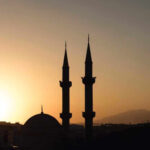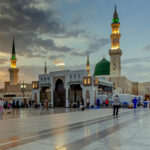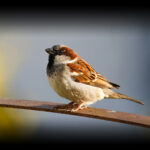This year’s Eid al-Fitr— a widely celebrated Muslim festival, will likely fall on March 20. Based on the lunar calendar, Eid al-Fitr is commemorated after the end of the Holy month of Ramadan when Muslims fast from sunrise till sunset, thus, Eid al-Fitr is also known as the ‘Festival of Breaking Fast.’ Many people observe the festival by visiting friends and family, exchanging gifts, and making special food and sweets that are synonymous with the festival itself. In many South Asian countries like Pakistan and India, elders of the community give gifts of money to the children, which are known as ‘Eidi.’ Other religious traditions also see Muslims going for special morning prayer on the day of Eid. Once the prayer ends, all Muslims in the congregation, be it a stranger or friend, exchange Eid greetings by hugging each other.
History of Eid al-Fitr
Eid al-Fitr’s day changes every year according to the Islamic calendar, which depends on lunar cycles. Every year, the day shifts by at least a 10-day margin, falling earlier and earlier. This year’s Eid al-Fitr will most likely fall on May 3. In any case, the occasion is loved worldwide by the Muslim community and it is celebrated for three days. After a month of fasting and abstinence, Muslims celebrate the festival with much fanfare. It is also a day when ‘Zakat,’ a compulsory form of charity for Muslims who can afford it, is paid. Zakat, which amounts to 2.5% of the gross net of a Muslim household, is given to the less fortunate in society. ‘Fitrana’ is another form of charity that is also given during this time, and this type of charity aims to rectify any accidental mistakes a person may have made while fasting.
Many countries celebrate Eid al-Fitr according to their specific cultures and traditions. In the Middle East, people offer morning prayers by going to a specially designated area called ‘Eid-gah’. Eid-gah is usually a vast empty space. Unlike other Muslim prayers, Eid morning prayers do not have a special call for prayer. In other countries, like Malaysia and Pakistan, people visit their families and friends, taking along gifts and special food items. These countries’ traditions also see people making special food dishes like ‘sheer khurma’ and ‘sawaiyan’ on the morning of Eid. These sweet items are made with vermicelli, milk, sugar, and dry fruits. South Asians also refer to Eid al-Fitr as ‘choti’ Eid, meaning the smaller Eid. There are two Eid festivals in Islam; Eid al-Adha is considered the ‘bigger’ festival as it commemorates the end of the Hajj pilgrimage with the sacrifice of animals like sheep, goats, cows, and camels
Eid al-Fitr timeline
Iran publishes and distributes special edition Eid al-Fitr stamps that feature the Eid crescent and a mosque with a congregation.
Since Eid al-Fitr falls on a different day every year on the Gregorian calendar, two Eid al-Fitr festivals are celebrated, one at the beginning of the year and one at the end.
There is a drastic rise in sexual assault cases in Egypt during Eid al-Fitr.
Tunisia officially declares three-day Eid al-Fitr celebrations with preparations for the festival starting days before.
Eid al-Fitr FAQs
What is Eid al-Fitr?
Eid al-Fitr marks the end of the Muslim holy month of fasting, Ramadan, and is celebrated during the first three days of Shawwal, the tenth month of the Islamic calendar. Eid al-Fitr will likely be celebrated on April 22 in 2023. It also depends on when Ramadan started in individual countries. Therefore, some countries may celebrate it on April 22 or April 23.
What happens on Eid al-Fitr?
People usually wear new clothes and shoes on Eid al-Fitr. They also visit family and friends, ending the day with a special meal. Women also commemorate the occasion by applying henna/mehndi on their hands and feet.
Why do we celebrate Eid al-Fitr?
It is widely believed that Prophet Muhammad got the first revelation of the Holy Quran during the holy month of Ramadan. Eid al-Fitr is also a joyous occasion that celebrates all the virtues of Islam and unifies people.
How to Observe Eid al-Fitr
Celebrate with friends and family
The Eid al-Fitr festival is best celebrated with friends and family. Mark the end of Ramadan with others by holding a gathering, online or offline, and indulging in some good merriment and food.
Go gift shopping
As Eid al-Fitr rolls around, companies and brands bring out special seasonal products. This is the perfect time to get your loved ones special gifts to let them know that they are in your thoughts.
Cook delicious food
Eid al-Fitr is also known as ‘meethi’ Eid or Sweet Eid because this festival sees several Muslim households celebrating the occasion by making sweet dishes. Try old favorites or opt for a new recipe. Either way, the festivities will surely be the sweetest.
5 Facts About Zakat That Will Blow Your Mind
Zakat means purification
Zakat, which comes from Syriac Arabic meaning ‘purification,’ is meant to ‘purify’ the wealth and soul of Muslims.
Zakat is compulsory
For those who can afford it and are wealthy enough, Zakat becomes compulsory, and they must give it to those less fortunate.
One of the pillars of Islam
There are five pillars of Islam that a Muslim must always uphold, and one of them is Zakat.
It eliminates inequality
Zakat is meant to eliminate the socio-economic inequality that communities face.
It's valid after one year
Zakat becomes compulsory for a Muslim after one year of them holding a Nisaab amount of wealth, which is the minimum threshold of wealth.
Why Eid al-Fitr is Important
It’s a celebration of good times
Eid al-Fitr marks the end of Ramadan, which is a month-long tradition of fasting and abstinence. Muslims do not eat or drink anything from sunrise till sunset. Ramadan is a time of reflection for Muslims as they are made to understand what the needy community goes through when there’s nothing to eat or drink. Eid al-Fitr, thus, is not only a time of going back to normal life but is also a reminder of the things we should be thankful for.
It’s a celebration of gatherings
Merriment and celebrations abound during Eid al-Fitr. People visit family and friends, often going for overnight stays. Special Eid greetings are exchanged in the form of gifts. Women also apply henna/mehndi on their hands in groups
It’s a celebration of food
People prepare special food items on Eid al-Fitr. Be it sweet dishes like ‘sheer khurma’ or savory platters consisting of chicken or mutton, it’s a celebration of food and being grateful for it.
Eid al-Fitr dates
| Year | Date | Day |
|---|---|---|
| 2024 | April 10 | Wednesday |
| 2025 | March 31 | Monday |
| 2026 | March 20 | Friday |










































